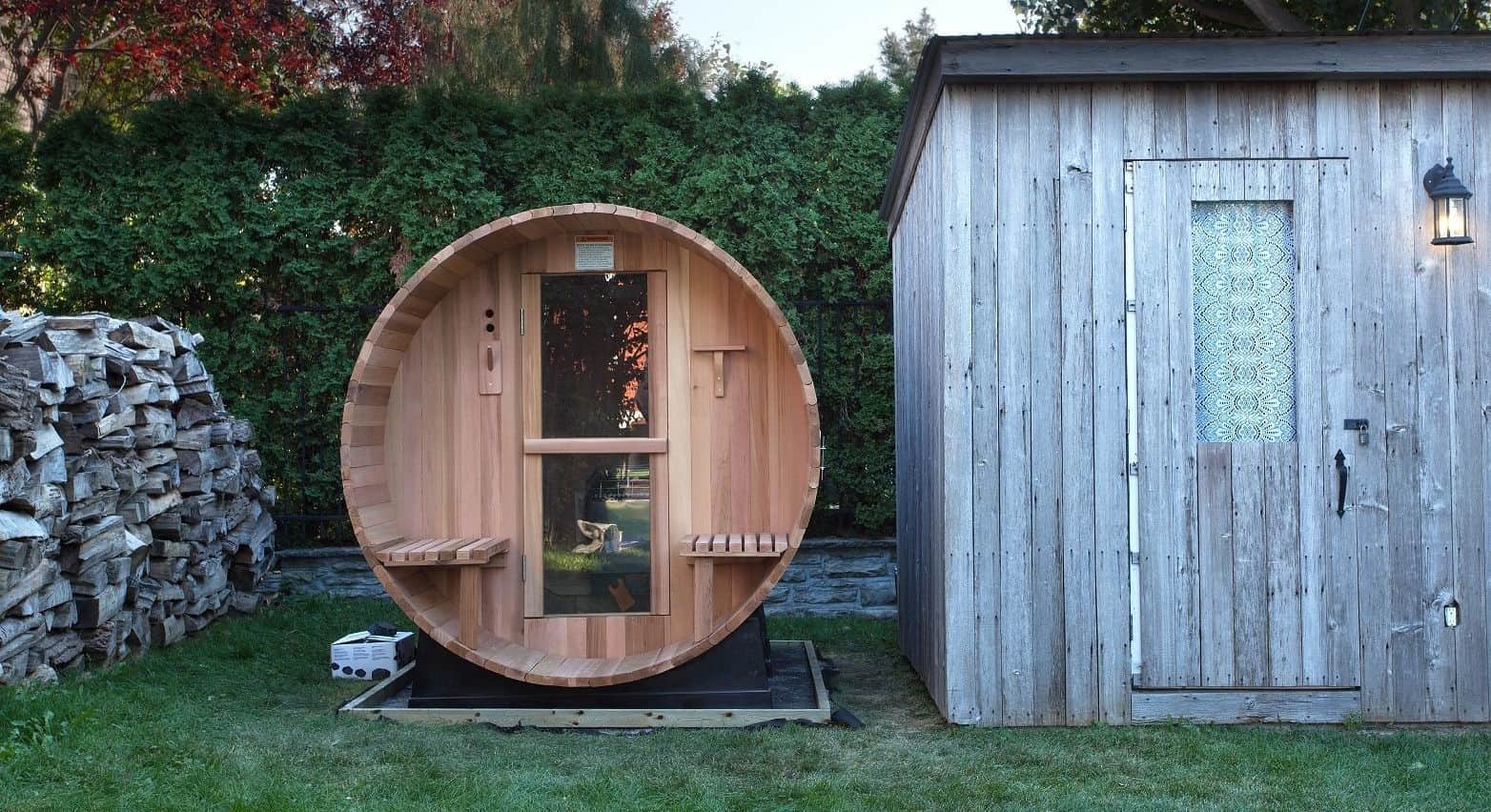After a hard day at work, people all have different ways of relaxing and winding down. One of the best ways to relax is to sit and relax in a bubble of warm, moist air in a sauna, letting the fatigue seep from your body. Saunas have been proven time and again to relieve stress and anxiety, and even pain like psoriasis and arthritis. And what’s better than melding into the welcoming warmth of a sauna? Doing so in your own backyard sauna!


Of course, if the right methods are employed, building a sauna is surprisingly simple. Do-It-Yourself sauna kits provide the easiest way to set up your own sauna. These kits include all the necessary elements and instructions to build and install a home sauna to fit your space perfectly. These for 2 people are easiest to do it yourself. Below are seven helpful, useful tips to build your best outdoor retreat to avoid costly or even illegal mistakes if you’re just starting out.
Location of your sauna is the most important part of building it, since where it’s built often determines how it’s built. Building an outdoor sauna saves you the extra expense of renovating your house, and also brings up the possibility of spectacular views and ambiance from the world around you.
You’ll want to make sure, first and foremost, that your chosen area is flat and free of any debris, and that the ground is dry. You’ll also want to make sure that you can easily string wiring to your chosen location and that a water source is easily accessible.
You’ll want very high-quality wood, a specialty sauna heater, R-11 and R-19 insulation specifically for both inner and outer walls, wiring, an air compressor and some kind of heat source, be it lava rocks or an infrared heater. The former is much cheaper if cost is your main focal point. We recommend cedarwood both for the panels and for the benches.
Make sure to design a blueprint specialized for your particular needs from which you’ll work. However, if you’re building an outdoor sauna, do not use an infrared heater. They’re not strong enough to combat full-on winter weather in an outdoor model.
Your sauna is essentially all but air-tight, holding the warm air in and making it hard for cold air to penetrate the room. But you’ll still need to breathe and expel the stale air, replenishing it with fresh air. It’s recommended to not build your ventilation system in the ceiling. It can be a tricky element to install in your sauna, so if you get stuck, you might be advised to seek professional help.
There’s no point in building this sauna indoors or out if you can’t count on it to retain heat. Indoor saunas can even wreak havoc with your home’s internal climate if you don’t insulate them properly. You’ll want to make sure you insulate the inner frame of the walls of your sauna with fiberglass finished with a vapor barrier. This keeps the inevitable moisture off of the fiberglass which will extend its life, requiring fewer issues with it in the future. Or you’re looking for eco-friendly options, there’s always recycled cotton insulation, made from old, shredded jeans if you can believe it.
There are several different heating elements you can look into for your sauna, but depending on where you live may determine what type you’ll settle on. As mentioned, you won’t want an infrared set up for an outdoor sauna, so your best options will then be either heated lava rocks or an electric heater. With an electric heater, you won’t need to worry about chimneys or a fire, and they’re inexpensive to run and maintain.
You should expect to ante up about $100-$500 dollars for a decent electric heater, and it’s a bit tricky to install them. It’s recommended to put them near the door and install some kind of guard around them to prevent burns.
Unless you’re a vampire with a taste for hot, wet air, you’re probably going to want some light for your sauna. You can install windows to use during the day, but at night, a light can prevent a painful toe-stubbing on something silly. Light isn’t absolutely necessary, but it does make moving around a little easier.
Depending on your setup, you can use solar or wind power, or you can find an electrician to wire lights into your homemade setup for you. It is possible to do the lighting on your own provided you’ve got a precise installation guide in your hands.
Show caution when reading any information about saunas online. You’ll find a lot of information written by people who aren’t true experts of the art of building saunas. By focusing on the acquisition of proper, factual information, you’ll learn more information about various mistakes you could possibly make in construction, such as incorrect sizing, incorrect electrical installations, or buying the wrong heating elements for an outdoor setup.
Building a sauna can be a rewarding and relaxing experience for the ambitious carpenter. Just make certain that you do it correctly, or you could be in for a world of hurt, either through embarrassing and costly accidents, or heaven forbid a physical and painful misstep. Take your time, focus on your plan, and always ask for help when it’s needed.
This website uses cookies.